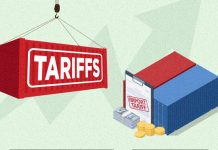B2B marketers face evolving challenges. Will Post of Measured shares how to rethink ROI, embrace privacy-resilient measurement, and align sales and marketing for growth.
As B2B marketers navigate 2025’s evolving landscape—marked by longer sales cycles, tightening privacy, and shifting buyer behavior—the need for smarter, more adaptive strategies is paramount. We recently sat down with Will Post, Vice President of GTM (Sales and Partnerships) at Measured, a seasoned leader who’s helping brands tackle these challenges head-on with a sharp focus on incrementality, experimentation, and strategic alignment.
In this exclusive interview, Post unpacks how B2B teams are thoughtfully rebalancing performance and brand-building investments, moving beyond the limitations of last-click attribution, and embracing privacy-resilient measurement to understand ROI truly. He also shares invaluable insights on building impactful GTM partnerships, leveraging AI for sales enablement, and uniting sales and marketing around a single source of truth to drive sustainable growth.
Whether you’re refining your measurement stack or optimizing your go-to-market motion, Will offers a pragmatic playbook for what’s working now and what’s next in the complex world of B2B marketing.
Full interview;
How do you see B2B marketing spend evolving in 2025—are brands still prioritizing performance, or is there a shift back to brand building?
In 2025, we’re seeing a deliberate rebalancing in B2B marketing spend. It’s not a departure from performance, but rather a strategic shift toward integrating brand-building more intentionally into the media mix. After several years of hyper-focus on lower-funnel efficiency, economic headwinds and longer sales cycles have prompted B2B marketers to invest in top-of-funnel awareness to drive future demand. Measured’s incrementality testing confirms that channels like Connected TV, podcasts, and even digital out-of-home (long considered “unmeasurable”) are proving to be both incrementally valuable and more attributable than previously assumed, mainly when performance is evaluated using experimentation instead of last-click attribution.
That said, B2B teams aren’t abandoning performance; they’re just getting smarter about it. Brands increasingly apply incrementality principles across channels to understand what’s truly driving new leads versus simply harvesting intent.
What are the biggest blind spots you see in how B2B marketers evaluate ROI today?
One of the biggest blind spots in B2B marketing ROI evaluation is an over-reliance on last-click attribution or CRM-reported lead data as a proxy for channel effectiveness. These models often over-credit bottom-of-funnel touchpoints like branded search, retargeting, or direct traffic, all channels good at closing but not necessarily good at driving net-new demand.
Another blind spot is evaluating ROI in static snapshots rather than as a dynamic, evolving metric. Many B2B marketers still rely on quarterly or annual campaign performance reviews, ignoring how incrementality fluctuates across seasonality, creative, and target segments.
With sales cycles stretching across quarters, attribution lag distorts true ROI and delays optimization. Measured addresses this by enabling always-on testing and Media Mix Modeling that gives marketers real-time feedback on what’s working, not just what’s converting. This shift from retrospective reporting to proactive decisioning is essential to unlocking full-funnel performance and sustainable growth in B2B.
With data privacy tightening, how are you advising clients to approach measurement and attribution differently?
As data privacy regulations tighten and third-party cookies fade, Measured advises clients to move away from deterministic user tracking and embrace privacy-resilient approaches like incrementality testing and Media Mix Modeling. Instead of relying on user-level attribution, we help brands quantify the actual impact of each channel through experimentation, isolating lift and causality without needing to track individuals. This shift ensures compliance and delivers more accurate insights, especially with Walled Gardens and offline channels.
What does a great GTM partnership look like in 2025? What are the non-negotiables?
From Measured’s perspective, a great GTM partnership in 2025 is built on shared accountability, common language, and aligned incentives. The most effective partnerships break down silos between marketing, finance, and revenue teams by grounding every decision in a single source of truth, ideally powered by incrementality-based measurement. Non-negotiables include: mutual commitment to testing and learning, real-time visibility into performance drivers, and a culture of collaboration where both sides act as strategic operators, not just executors.
How is Measured helping brands get more clarity on incrementality in a post-cookie world?
Measured helps brands gain clarity on incrementality in a post-cookie world by replacing outdated, user-level tracking with privacy-resilient methodologies rooted in experimentation and Media Mix Modeling. Instead of relying on individual identifiers, our platform quantifies actual media impact through geo holdouts, always-on incrementality testing, and MMM calibrated with first-party data. This allows brands to see what’s driving incremental performance, across channels, including Walled Gardens, without violating privacy standards. In a world where cookies are disappearing, Measured delivers clarity through causal evidence, not correlation.
How do you ensure alignment between sales and marketing teams when presenting attribution insights to clients?
We ensure alignment between sales and marketing by grounding all attribution conversations in a single source of truth: incrementality. Rather than debating conflicting data from different platforms, both teams are equipped with the same validated insights derived from controlled experiments and Media Mix Modeling. We standardize how performance is communicated using consistent language, dashboards, and frameworks, so everyone from account executives to the CMO speaks the same language. This shared foundation eliminates finger-pointing and enables sales and marketing to present unified, trusted insights that drive action confidently.
What role do AI and automation play in your sales and partnership strategies today—and what’s hype vs. helpful?
From Measured’s perspective, AI and automation are most helpful when they enhance precision, speed, and scale in decision-making, not replace strategic thinking. Our sales and partnership strategies use AI to automate tasks like forecasting, lead scoring, and pipeline intelligence, allowing teams to focus on higher-value conversations. But we’re clear-eyed about the hype: generic AI-generated outreach or “black box” recommendations undermine trust. What’s truly helpful is when AI supports human expertise, surfacing insights faster, personalizing messaging more effectively, and enabling partners to act with confidence grounded in validated data.










